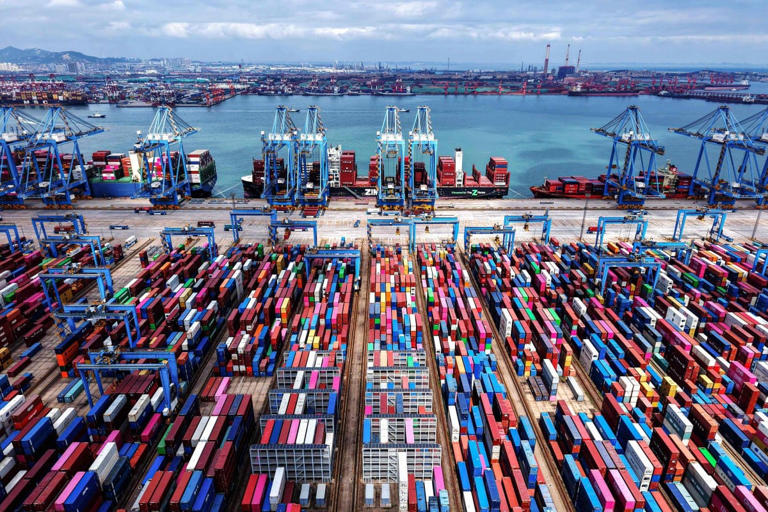BEIJING, September 8 — China’s export growth slowed significantly in August, marking its weakest pace in six months and falling short of analysts’ expectations. The drop reflects growing challenges for the world’s second-largest economy as it navigates global uncertainty, wavering demand, and ongoing trade tensions with the United States.
According to customs data released Monday, China’s exports rose by 4.4% year-on-year in August, missing the 5% rise predicted in a Reuters poll and down from July’s stronger 7.2% gain. Imports also underperformed, growing only 1.3% compared to July’s 4.1%, well below the expected 3% increase.
The decline came even as China continues to benefit from a temporary tariff truce with the United States, which began in August. However, economists warn that the relief appears short-lived, especially as President Donald Trump continues to threaten new penalties, raising uncertainty for exporters.
“The number is still decent,” said Xu Tianchen, a senior economist at the Economist Intelligence Unit. “But the resilience of exports has certainly lasted longer than we expected.”
China’s exports to the US took a steep hit, plunging 33.1% year-on-year in August. However, shipments to Southeast Asian nations increased by 22.5%, suggesting Chinese producers are increasingly turning to alternative markets in Asia, Africa, and Latin America to make up for lost ground.
Still, analysts stress that no region rivals the sheer consumption capacity of the US, which has historically absorbed over $400 billion worth of Chinese goods annually. Trump’s threats in July to impose 40% tariffs on rerouted goods have further complicated Chinese exporters’ strategies.
Despite the broader slowdown, China’s trade surplus widened slightly to $102.3 billion, compared to $98.24 billion in June, but still down from June’s peak of $114.7 billion.
The road ahead remains uncertain. While Beijing has shown caution in rolling out additional fiscal support, analysts are watching closely for any shifts in the fourth quarter. Notably, China’s hallmark “cash-for-clunkers” program—designed to stimulate consumption—has not seen fresh funding despite several provinces exhausting their allocations.




